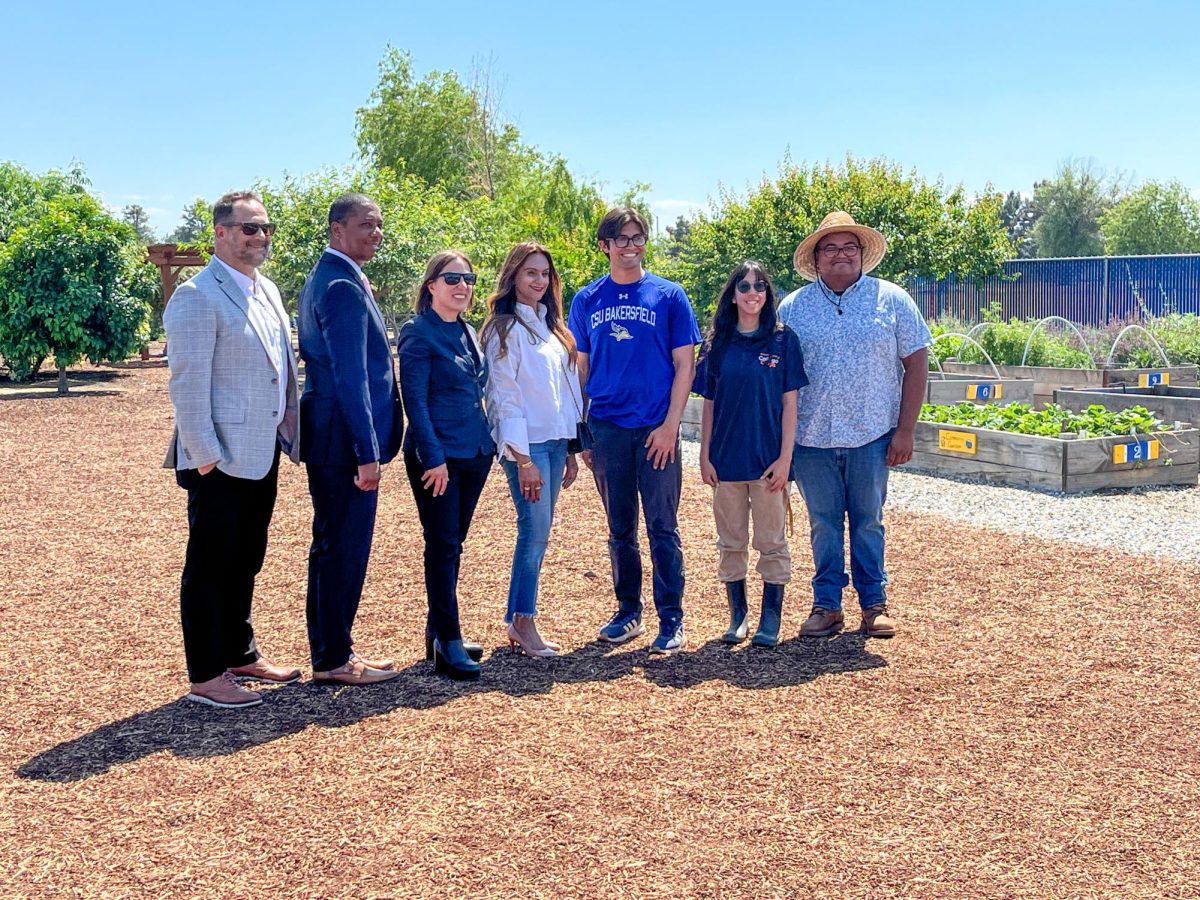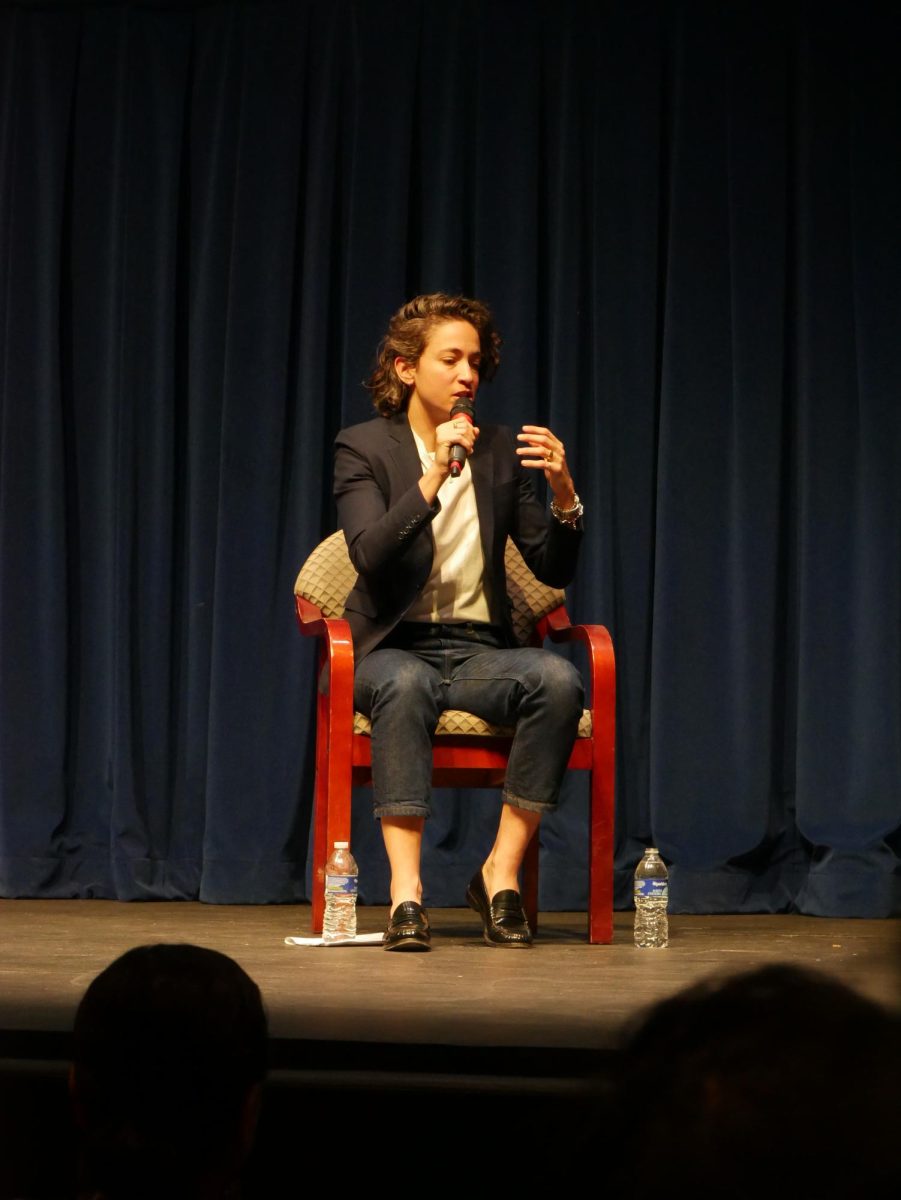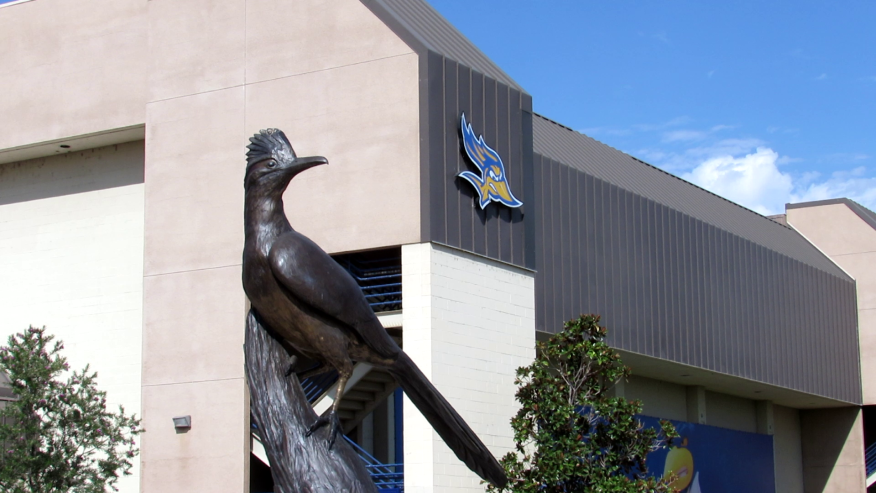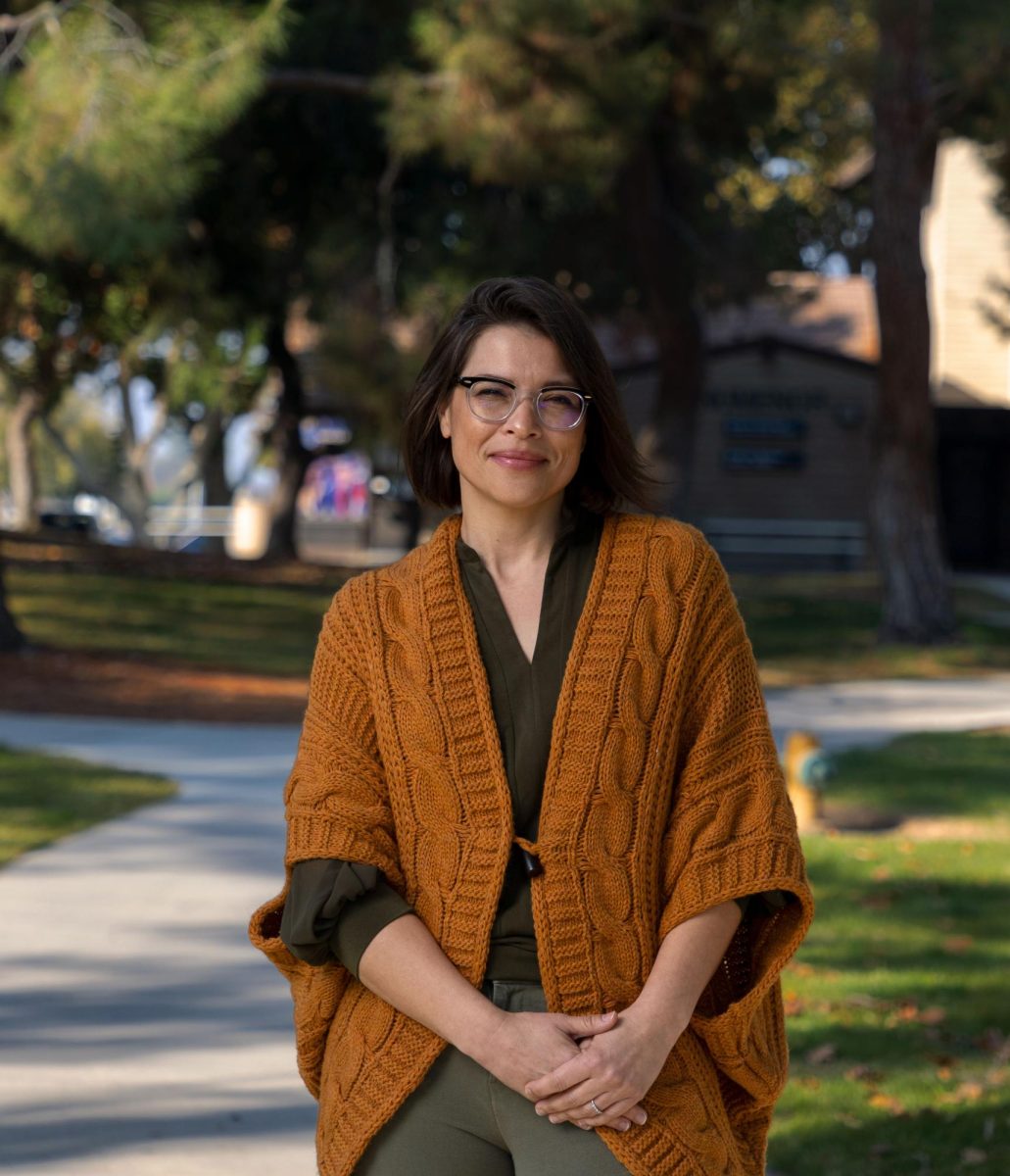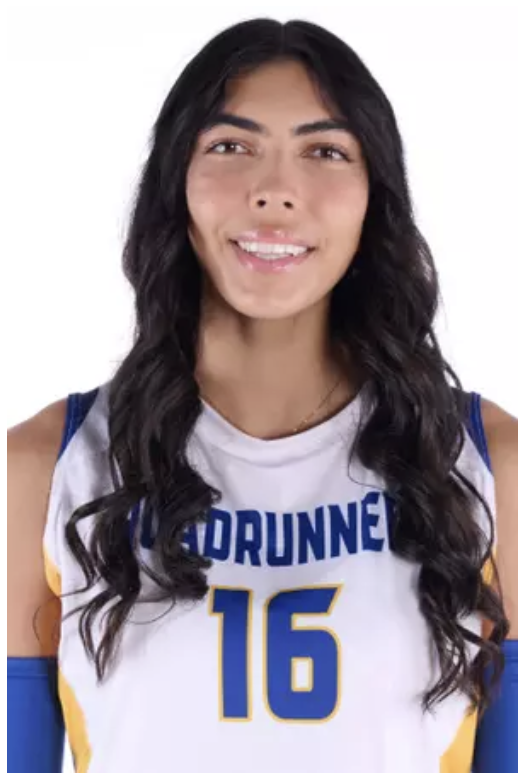
Muslim women have many different faces, yet face the same stereotypes. Education and awareness is paramount for more understanding of Muslim culture. From left: Hala Alnajar, Maryam Ali, Hiba Ali, Sahro Nur, Afaf Abdulla.
By Steven Barker
Staff Writer
“Take that thing off your head,” she told her. “You’re in America. Respect the country.”
Gokh Alshaif is no stranger to the curious glances strangers direct to her headscarf these days. However, when the 22-year-old senior political science and religious studies double major was approached by an older woman at the RaboBank Theatre during the intermission of a Shakespeare musical almost two years ago, Alshaif was shocked by the woman’s comments. She had never before been confronted about her hijab.
“We were in intermission, and we were out in the lobby, and I saw this older woman,” Alshaif said. “She was looking at me, and she had this look that I had never seen before. I was scared at first because I was like ‘Why is this old lady looking at me this way?’ I didn’t realize it, but it was … this look of hatred, and I had never experienced that.
“That whole night was ruined for me.”
For those who wear the hijab, anti-Islamic stereotypes are a reality of our post-9/11 world. However, rather than allow themselves to be defined by misconceptions, Muslim women enrolled at California State University, Bakersfield are looking to change how people perceive their head scarves.
Through on-campus events hosted by the Muslim Students’ Association, they are transforming hijab stereotypes into an opportunity for religious dialogue, in which Muslims inform their non-Muslim peers on Islam, its religious values and Muslim culture.
The Aftermath of 9/11
When Alshaif walked into her fifth-grade classroom on Sept. 11, she did not initially understand what was happening. She remembered a number of details: a small group of students were already waiting in the classroom; her teacher was focused intently on the television screen, listening to the broadcast regarding the attack; she also remembers having never heard of the World Trade Center prior to the broadcast.
In the coming days, she would experience firsthand how the attacks would forever change her life.
Although her family was well-respected in her hometown of Arvin, Calif., Alshaif said her parents grew fearful of violence against their family by people upset by the 9/11 atttacks. While Alshaif had worn the hijab for most of her life and had not faced any issues resulting from her decision, her parents feared their daughter’s head scarf would make her a target of anti-Muslim violence.
“In the initial month after that, my mom was so scared of letting us out of the house,” Alshaif said. “She was constantly telling us, ‘No, don’t go out of the house. If you want to play, go play in the backyard.
“I didn’t even understand it. I was like, ‘Mom, why? Just yesterday we could go out and play. Why not now?’ [But] Muslim parents were scared for their girls to wear the hijab.”
To dispel any lurking suspicions regarding their patriotism, Alshaif says her family felt the need to be “patriotic on steroids.” While numerous American flags were flown in her community in the days following 9/11, Alshaif recalls that, even years after the attacks had transpired, she would wear American flag pins on her backpack, a flag would always be flown in their front yard and American flags would be displayed at her family’s business long after customers stopped purchasing them.
Hala Alnajar, a 19-year-old sociology and religious studies double major, said that, since 9/11, there has been a proliferation of stereotypes suggesting Muslim women are oppressed. As a result, she said she has been approached by people on multiple occasions who, associating her head scarf with victimization, assure her of her freedom and safety in America.
“People have looked really sympathetic or worried,” Alnajar said. “They’re being ignorant but you feel bad because they care for you. They are worried for you, and you want to handle that in a way where you’re not insulting the fact that they care but at the same time still educating them.”
Part of an education of Muslim values consists in explaining the meaning and significance of the hijab. While the hijab is sometimes believed by non-Muslims to be a symbol of male oppression or Islamic extremism, Alnajar added that the hijab is chiefly a symbol of modesty.
“The word ‘hijab’ is not just the head scarf, even though most of the time it’s used that way,” Alnajar said. “It represents everything from the way we dress to the way we carry ourselves – carrying yourself in a very respectful way, not insulting people, being respectful to the people you talk to and representing Islam in the best way.”
With the responsibility of educating those who are unaware of either the meaning of the hijab or an understanding of Islam comes a great deal of pressure, Alnajar said. Because she could be the only Muslim woman that some people ever meet, she often has to restrain her outspoken personality in the fear that one ambiguous comment could confirm to someone the belief that Muslims are anti-American or oppose Western culture.
For Naseem Alshaif, a 25-year-old psychology and religious studies double major, talking to others about Islam and the hijab are the best ways of proving that Muslim women are no different than anyone else.
“Muslim women are independent like any other woman,” Alshaif added. “A Muslim woman can be independent; she can be anything she wants. A scarf doesn’t hold her back. A scarf will never hold me back from what I want to do. I will never be held back by my religion.”
Banding together to fight misinformation
Founded in the fall of 2006 by Amit Qwfan, a former student at CSUB, the Muslim Students’ Association hosts on-campus events dedicated to educating non-Muslims on topics such as Islam, Islamic culture and the significance of the hijab.
On Feb. 26, the MSA hosted the Hijab Challenge, where women were invited to wear a free hijab and experience the life of Muslim women for a day.
This year, 108 women participated in the event, an increase of 18 students from the previous year, according to MSA President Maryam Ali.
The Hijab Challenge is one of three cultural events hosted annually by the MSA. During the fall, the club hosted the Eid festival in celebration of a Muslim holiday, where the club featured Arabic calligraphy, food, henna tattoos and a Research Islam booth so visitors could collect more information.
This quarter, the MSA plans on hosting a lecture, where a guest speaker will discuss the values of Islam and answer audience questions.
Ali says the MSA is planning to add another cultural event per quarter to accommodate a growing interest among the campus in Islamic culture. Specifically pinpointing the reception the MSA held after the Hijab Challenge concluded, Ali said that many students became more informed of the lives of Muslim women after wearing the hijab and asking questions.
“We’ve had a lot of positive feedback,” Ali said. “People opened up by sharing their experiences and thoughts, which was great. Some said ‘I had different conceptions about you guys, but after this event, I learned a lot from it.
The ability to tap into other cultures and religions is at the heart of what Ali considers to be a meaningful college experience.
“The college experience is supposed to be a place where we meet different people and expand our knowledge of the world,” Ali said. “When we only surround ourselves with people who are like us, we miss out on an opportunity to learn things outside of the textbooks. So it’s important to make use of the campus’s diverse environment and interact with people from different cultures and beliefs.”
For CSUB alumna Sequoia Parrott, her decision to participate in the Hijab Challenge was fueled by a desire to experience the life at a Muslim woman. However, as someone who identifies herself as a Christian, the decision to wear the garbs of another religion was initially difficult.
“I wondered how anyone who went to my church would react if they saw me wearing the hijab,” Parrott said. “ That was probably the hardest part for me.”
Parrott says her experiences during the event helped reshape her perception of Muslim women.
“I now saw how much courage it takes to wear a hijab on a daily basis,” Parrott said. “It shows how strong their faith actually is because, instead of just believing something, you are exhibiting it physically. Everyone knows you practice Islam because you wear the hijab.”
How to educate yourself on Muslim culture
Ali, Alnajar and Alshaif all said that the best way to learn about Islam is to approach and interact with Muslim students on campus.
“If you have a Muslim in your class, don’t be afraid to go talk to him or her,” Alshaif said. “Go ask questions. Act completely normal. Treat them the way you would treat any other person. As you get to know them, you’ll get to realize that they’re just like you.”


